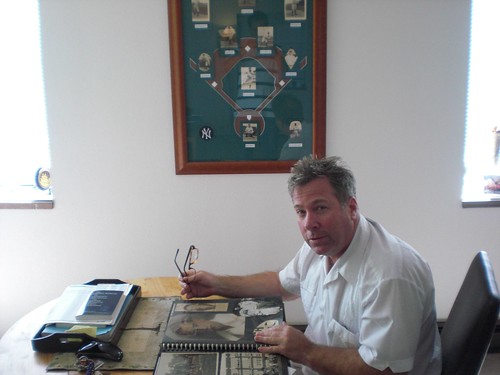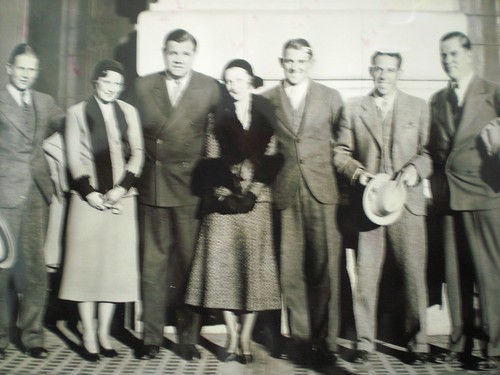What he did: Reading the name Johnny Frederick might make one think of a Revolutionary War hero or a punk rocker. Only baseball historians may know of the Johnny Frederick who played six solid seasons with the Brooklyn Dodgers from 1929 through 1934 and then vanished from the big leagues, never to return.
Frederick is part of a small, but intriguing class of ballplayers: those men with at least 200 hits in a season, but fewer than 1,000 in their career. I know of 22 players who did this. Nearly all of them played in the 1920s and ’30s, and no one appears to have accomplished the feat since 1950. I’m interested why this is, as well as what may have driven men like Frederick from the majors and what could have inspired them to stay.
Era he might have thrived in: 1970s to current
Why: About a month ago, a loyal reader emailed me names of a few players with at least 200 hits in a season but less than 1,000 in a career. It seemed a little quirky, and I initially didn’t pay it much attention, but on Tuesday, while researching players with lifetime batting averages above .300 for an upcoming post, I stumbled onto a few more of these men. Wednesday, I got systematic. Using Baseball-Reference, I scoured the list of players with at least 200 hits in a season.
Here’s an alphabetized list of inactive players who’ve had at least 200 hits at least one season but less than 1,000 in their careers:
| Player | Years Active | 200 Hit Seasons | Career Hits |
| Dale Alexander | 1929-1933 | 215 (1929) | 811 |
| Beau Bell | 1935-1941 | 212 (1936), 218 (1937) | 806 |
| Eddie Brown | 1920-1928 | 201 (1926) | 878 |
| Dick Burrus | 1919-1928 | 200 (1925) | 513 |
| Bob Dillinger | 1946-1951 | 207 (1948) | 888 |
| Johnny Frederick | 1929-1934 | 1929 (206), 1930 (206) | 954 |
| Chick Fullis | 1928-1936 | 200 (1933) | 548 |
| Johnny Hodapp | 1925-1933 | 225 (1930) | 880 |
| Charlie Hollocher | 1918-1924 | 201 (1922) | 894 |
| Woody Jensen | 1931-1939 | 203 (1935) | 774 |
| Benny Kauff | 1912-1920 | 211 (1914) | 961 |
| Bill Lamar | 1917-1927 | 202 (1925) | 633 |
| Hank Leiber | 1933-1942 | 203 (1935) | 808 |
| Austin McHenry | 1918-1922 | 201 (1921) | 592 |
| Ed Morgan | 1928-1934 | 204 (1930) | 879 |
| Lance Richbourg | 1921-1932 | 206 (1928) | 806 |
| Moose Solters | 1934-1943 | 201 (1935) | 990 |
| Jigger Statz | 1919-1928 | 209 (1923) | 737 |
| Snuffy Stirnweiss | 1943-1952 | 205 (1944) | 989 |
| George Stone | 1903-1910 | 208 (1906) | 984 |
| Fresco Thompson | 1925-1934 | 202 (1929) | 762 |
| Dick Wakefield | 1941-1952 | 200 (1943) | 625 |
A few have come close to this feat in recent years. Lyman Bostock fell one hit shy of 200 in 1977 and then died at the end of the following year at 27, finishing with 624 career hits. Doug Glanvillle and Randy Velarde each had 200-hit seasons and fewer than 1,200 career hits. But the overall trend seems nothing like it was 80 years ago.
The presence of some men on the list above can be explained. McHenry died a few months after his last game in 1922, Kauff was barred from the majors at 30 because of his alleged participation in a stolen car ring, and Stirnweiss played his best ball in a talent-depleted American League during World War II. A few players listed here also had their time in the majors cut short by that war. And my reader pointed out that Alexander was unjustly labeled a poor fielder, and no team would sign him after his batting average dipped below .300.
Alexander and most of the men here went onto good stints in the minors after leaving the majors. Some opted for the Pacific Coast League, where the travel was shorter, the season longer, and the weather warmer than the majors, which did not exist west of St. Louis prior to 1958. And in the days before free agency and players like Glanville or Velarde commanding a few million dollars, a non-star could earn more playing in a place like the PCL than the majors. Some of these men also rose to great heights in lesser circuits, like Statz who Lawrence Ritter called the Pete Rose of the PCL.
Frederick hit .363 with my hometown Sacramento Solons in 1935, his first year in the PCL after the majors and followed with five more seasons for rival Portland, hitting over .300 every year. He retired with nearly three times as many hits in the PCL than the majors, and between the two, he had over 3,000. If Frederick played in the majors today, I could envision him like Paul Molitor, a regular batting title threat earning millions, a spot in the 3,000-hit club, and his place in Cooperstown.
Any player/Any era is a Thursday feature here that looks at how a player might have done in an era besides his own.
![Babe Ruth [Yankees]](https://farm5.static.flickr.com/4117/4899377318_6e78c26b0b.jpg)

